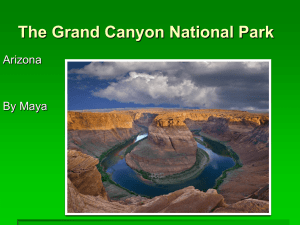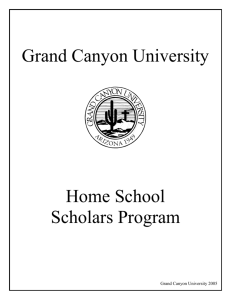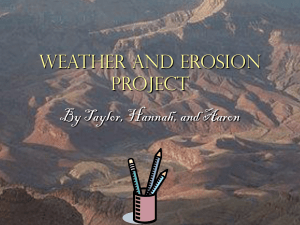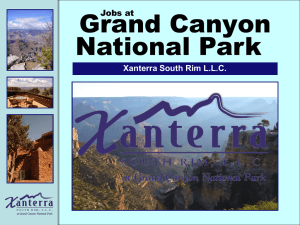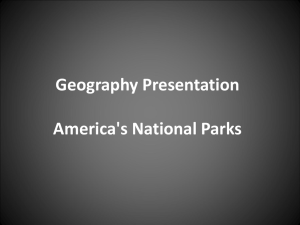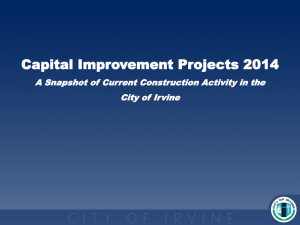PowerPoint Presentation - “Nature, Culture, and History at the Grand
advertisement
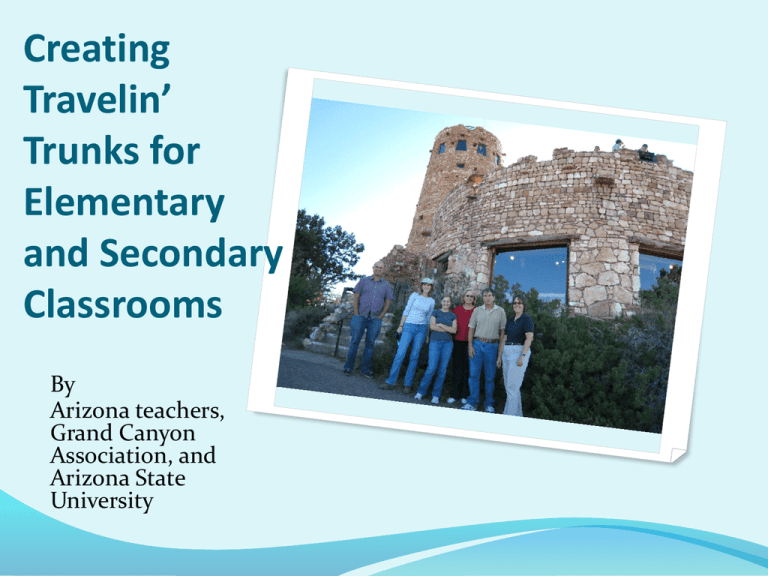
Creating Travelin’ Trunks for Elementary and Secondary Classrooms By Arizona teachers, Grand Canyon Association, and Arizona State University Travelin’ Trunks Available through the Grand Canyon Association Grand Canyon National Park Travelin’ Trunks are an outreach endeavor of Grand Canyon Association. GCA designed the program in a way that transports students and teachers to one of the world’s premier learning destinations without actually leaving the classroom. Trunks may also be used pre- or post-visit. Most materials and lessons are geared toward fourth- through eighth-grade students; however, GCA also offers a Grand Canyon Primary trunk for kindergarten through third-grade students. The trunks focus on the ecology, human history, and geology of Grand Canyon. Trunks contain books, videos, posters, slides, maps, and other interesting and appropriate materials. Each trunk also includes lesson plans. Teachers may choose the lessons and activities most appropriate to their learning goals. Education specialists created the activities and lesson plans, and appropriate National Park Service staff and other outside experts reviewed the materials for accuracy. ASU teamed with GCA for this project to revise the elem human history trunk and to create a secondary trunk (a mini-archive in a box!) to help middle and high school students learn about Grand Canyon and its place in larger American history themes. http://www.grandcanyon.org/fieldinstitute/educators_trunk.asp Teacher Team Arizona Elementary and Secondary Teachers joined ASU undergraduate and graduate students to create the lessons: Amanda Arndt Greg Beatty Bill DeStefano Mary DeStefano Sara Detrick Kim Hoffman Marcie Hutchinson Mary Landahl Diana Laufenberg Joan Miller Adam Tompkins Peter Trentacoste Navajo Consultants Delbert Bighorse and Julia Curley contributed to teacher understanding of Grand Canyon history GCA Headquarters at Canyon Teacher Workshop at Grand Canyon launches Travelin Trunk creation. Paul Hirt (top left) and Yolonda Youngs (right of Paul) share GC history and geography insights. Professor Paul Hirt and teachers at Grand Canyon’s South Rim Grand Canyon Historian Mike Anderson Touring Grand Canyon Museum Collection with Archivist Colleen Hyde Finding Primary Sources Hopi Ranger Phyllis Yoyetewa Kachinhongva Field Trip with Delbert Bighorse’s Navajo Family Julia Curry Tells oral histories of life at her family’s property near the Grand Canyon Lesson Creation Lesson Design Engage students in Hands-On, Minds-On Learning Help students learn by doing history Promote historical thinking skills and analysis Link to national history standards and Arizona’s revised social studies standards. Cross-curricular: help teachers meet reading & writing standards Teacher-friendly and easily adaptable to a variety of settings Make available via the GCA Travelin’ Trunks and through the project’s and GCA’s websites Couple trunk and internet resources Student Objectives Understand and appreciate the unique and special environment of the Grand Canyon by examining artifacts and historical resources. Compare and contrast the multiple perspectives of the people who have lived here or passed through the Canyon during the past 400 years. Analyze and interpret primary sources to understand the relationship between historical evidence and the construction of the historical record. Understand that indigenous peoples still live, work, and play at and near the Canyon. Assess the inherent contradictions of the creation and maintenance of the Grand Canyon National Park’s boundaries in an effort to control the actions of others in this habitat deemed “publicly owned.” Examine controversial policies within the context of the environmental movement and determine the application of past efforts in protecting our environment in the future. Identify and note the impact of efforts to portray the Grand Canyon in photography and painting, understanding that the Canyon is seen through cultural lenses, Evaluate how the art of the Canyon can be a lens by which American history can be understood. Discuss the Canyon’s importance on art, literature, environmental understandings, government policies, relationships between peoples, recreation, science, and tourism. Describe and evaluate the actions Native Americans to endure in this environment and maintain traditions while adapting to the presence of the Grand Canyon as a National Park. Use Movement Power Guiding Concepts of the Travelin’ Trunk Lessons Concepts are “word thoughts” that guide learning enabling facts to be thoughtfully organized in building enduring understandings. Piloting the Lessons Primary Source Photo: CCC Camp at Phantom Ranch Kim Hoffman and Archival Folders with Primary docs K-20 Learning at Project Website Elementary Secondary University More Information Nature, Culture, and History at the Grand Canyon Website http://grandcanyonhistory.clas.asu.edu/ Grand Canyon Association Website on the Travelin’ Trunks http://www.grandcanyon.org/fieldinstitute/educators_tru nk.asp Adelheid Fischer, “Outdoor Classroom Grande!” in ASU Research http://researchmag.asu.edu/2007/09/outdoor_classroomg rande.html Funding Support and thanks to Arizona State University Institute for Humanities Research Seed Grant National Endowment for the Humanities Helios Education Foundation/William C. Jenkins History Education Fund in the Department of History at Arizona State University for the improvement of the teaching of history at the secondary level Grand Canyon Association Salt River Project Special Thanks to the Project’s TEACHER TEAM! Amanda Arndt Greg Beatty Bill DeStefano Mary DeStefano Sara Detrick Kim Hoffman Marcie Hutchinson Mary Landahl Diana Laufenberg Joan Miller Adam Tompkins Peter Trentacoste


